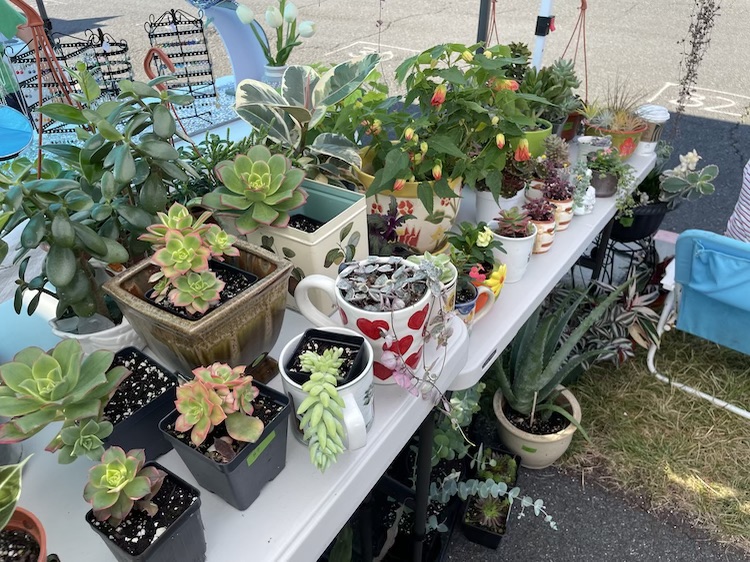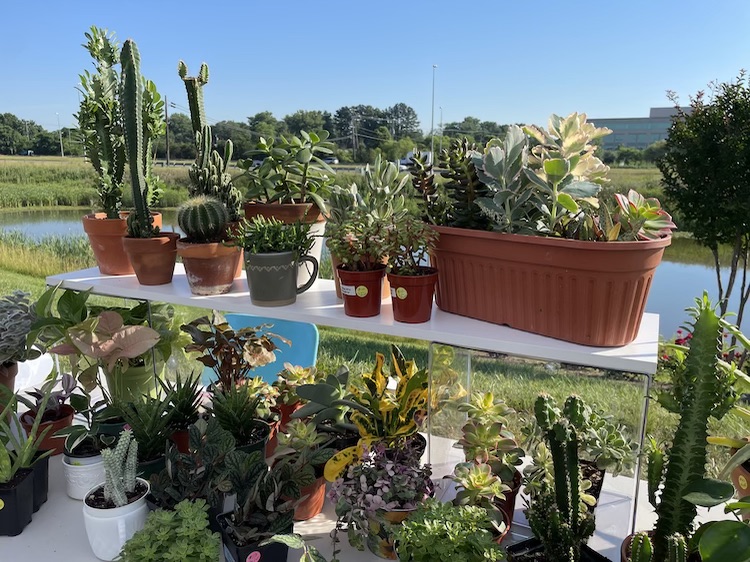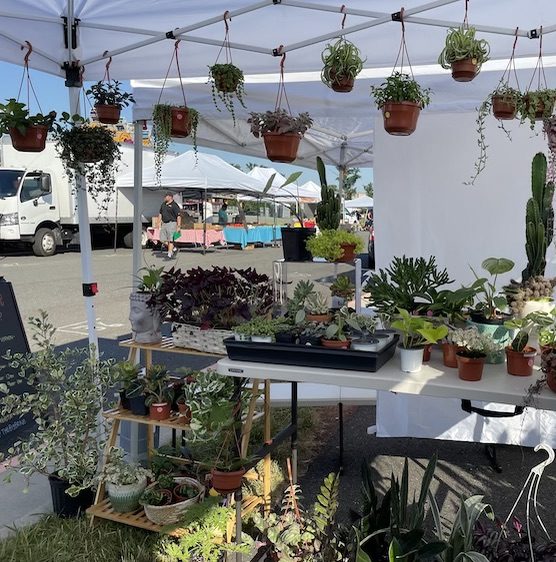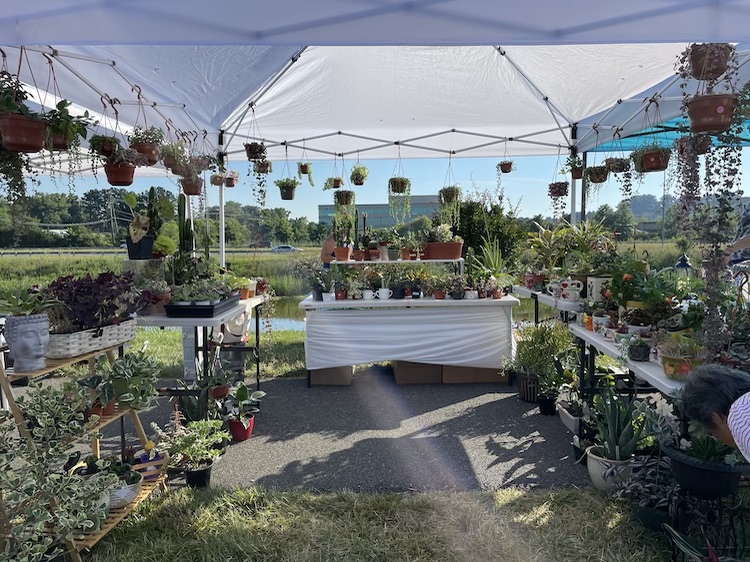Plant Care
Care for your plants well, and they will grow with you.
There are thousands of plants out there to collect and take care of. There isn’t any general way to care for all plants, but this guide will help you get an idea of how to navigate your garden and grow your plants to the ceiling and beyond! Most indoor house plants come from three different regions of the world, Africa (southern, mostly) where we find most of the Kalanchoe, Euphorbia, Dracena and other desert-like plants. In South America there are genii like peperomia, philodendron, and syngoniums. We find plants like Hoya, pothos, and Pilea in the Southeastern regions of Asia near the Pacific. There’s even house plants native to North america! In the Sonoran desert we see Saguaro cacti, Astrophytum Cacti, and Tradescantias! I have been enjoying Tradescantia Nanouk lately. 🙂






Working backward from your plant’s scientific name, it should be easy to decipher where its genus is from and determine soil and water requirements from there. I have found that plants native to Africa have a propensity for dryness, and though they are drought tolerant they will need a bit more water than North American cacti. On a warmer note, plants that are native to the tropics (Southeast Asia, South America, and North Australia) will enjoy more frequent watering than cacti. Considering this, our plants don’t need as much water as one might think. Especially when they are grown indoors, they are receiving far less light compared to being grown outside, and thus will need less water when grown indoors. Tropicals in well draining soil (4in pot) will need water about once every 9 days in the growing season, and about every 14 days during the winter. Again, this is just a general guide, and your plants will have their own watering requirements for each type and size pot.




Now, soil, there are a million ways to fill your pot, but to find the right mix for your plant is a valuable skill that will keep your plants happy for years to come. Little known fact, but cacti can – and I’ve seen it – grow directly in peat moss if watered according to the amount of time it takes to fully dry. If you’re inclined to water your plants more regularly, it is suggested to add an extra part (or two) of perlite to your soil mix to ensure it will dry and aerate the roots before the next watering. Tropicals, on the other hand, are still susceptible to root rot and will benefit from added perlite to allow roots to explore the pot entirely. Your plants can live in soil without perlite, but when it comes time to repot you’ll notice that the core of your pot is a solid soil chunk with the roots circling endlessly around it. This makes the process difficult, and having to dig the old, compacted soil is not an easy feat. After it’s all said and done, the plant still fits in its initial pot and it seems the work was all for not. This is why it’s so important to mix your soil well and according to how your plant’s root system grows to avoid messy mishaps. Thicker roots like on philodendrons, pothos, and orchids (especially orchids) will typically require a looser soil to ensure its roots have optimal growth. Plants like spider plants, ficus, peace lilies have thinner, thread-like roots that do better in compact soil, however will still need sufficient aeration of the roots.

Speaking of soil, it is just as important to understand what size pot you are putting your plants in. Too big a pot, and it will start to suffer due to the excess moisture and the roots will begin to rot. When you are repotting into a pot that is too small, you may be a bonsai artist.. But it’s not bad to do small increments when you are repotting your plants,but you may find yourself repotting your plants every year. I like to repot my plants into a larger version of whatever pot it’s in currently. Plastic goes into plastic, and terracotta into terracotta. It keeps things consistent for my plants, and it will keep your watering schedule similar to that of its smaller pot. The size comparison between the old and the new pot should only be about an inch bigger around and deeper than the previous pot, that way your roots have room to grow out and down. This ensures an even growth pattern throughout the plant, and will carry it through even to the next container.







Light is the all encompassing factor that allows us to grow our plants. How much light should your plants be getting on a daily basis? The answer to this question is, of course, different for each one! It will always be best to keep your plants right on the window sill, and preferably in a south-facing window. Now, I know we are not all so lucky to have south facing windows, but both eastern and western will work just as well. Western windows tend to get more light in the evening, and eastern windows will shine in the morning. I keep my cacti in my western windows to keep them happy as it gets plenty of warm afternoon light. Eastern windows are great for my Philodendrons and Peperomia, as they get plenty of rays in the morning, with a bright, shady afternoon. Light and water go hand in hand, so your plants that sit directly next to the windows will need water more often than plants placed within a few feet of the window.

Some other factors that will affect your plant’s growth is the amount of air flow that it is getting. If you have many leafy plants together with no airflow to the top of the soil, your plants may suffer the same effects of overwatering. Your soil will retain more moisture which will cause it to dry slower – risking the roots rotting. A way to remedy this, is simply have a fan going in your plant room. It doesn’t have to be on all the time, but keeping it on for 8hrs a day, 3-4 days a week will significantly help your plants to grow a stronger base as well as keep soil moisture at an ideal level. Fertilization is another thing that our plants will need in order to grow, but it doesn’t necessarily have to be a lengthy process. I typically opt for solid fertilizers over liquid, as the solid ones offer a slow-release option. An added bonus is I don’t have to use additives to my water supply, and the fertilizer will release as you water your plants. Many soil mixes do come with fertilizer mixed in, so I will typically wait about six months before I fertilize again. With solid fertilizer, it is best to fertilize, once at the beginning of the growing season, one towards the middle, and again at the end, which will supply your plant with nutrients through the winter months.
Keep in mind these are general care tips, and some plants will have different water/soil/fertilizer needs. For plants that are grown in soil, this guide should help you start caring for your new indoor garden. If you have any questions on how to care for a specific plant, check out our plant care blog! Show us how your plants are doing by sending us a DM on Instagram!




Plant Care Guides:
Peperomia Plant Care
Peperomia is a genus of flowering plants in the family Piperaceae. It comprises over 1,500 known species, making it one of the largest genera in
Goldfish Plant Care
Like the Snack, their blooms smile back! Learning how to care for your new goldfish plant? We can help! Columnea Gloriosa is this
Spider Plant Care
Growing a new spider plant in the house? Here’s a few care tips to help you get started with your Chlorophytum Comosum! First,
Pink Princess Philodendron Care
Caring for your new Philodendron Erubesens, commonly known as the Pink Princess Philodendron is relatively easy. Like many philodendrons, water thoroughly and when
String of Turtles Care
Peperomia Prostrata, otherwise known as String of Turtles, is one of the plants taking 2022 by storm. These plants are native to the
Hoya Carnosa Compacta Care
Caring for your new Hoya Carnosa Compacta is one of the most exciting journeys in the plant world! These vining plants are commonly





